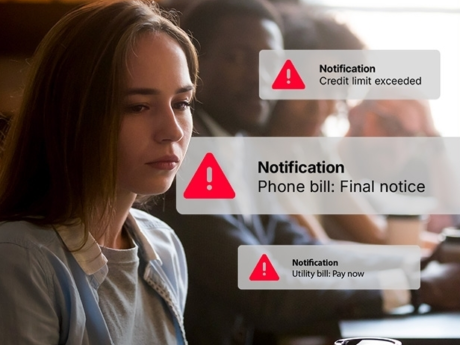How to read your credit report

Your credit report holds a lot of power and can help you understand your ability to achieve financial milestones. It can help you get a mortgage for a home, secure a car loan, and be granted various other forms of credit. Knowing how to read your credit report can help you better understand your financial standing and how to achieve your financial goals. Additionally, mistakes on credit reports are common and could hinder your chances of receiving credit in the future.
The structure and terminology may seem intimidating when accessing your credit report, but we’ve got you covered. We’ve pulled together a simple guide on how to make a healthy habit out of accessing and reviewing your credit report on a yearly basis.
What’s the difference between a credit score and a credit report?
Your credit score comes from your credit report, which is generated by a credit bureau. Your credit report tells a story of your entire history with credit by listing things like accounts opened and closed, payment history, and outstanding debt amounts. Your credit report details all the factors that impact your credit score. Both are used by lenders to determine your eligibility for new credit based on your creditworthiness.
How do I check my credit score and credit report?
There are two major credit bureaus in Canada: Equifax and TransUnion. You can easily access your credit report for free from both credit bureaus online. It’s important to request your credit report from both bureaus to ensure you’re seeing the full picture, as some banks and lenders only report to one bureau. Requesting and reviewing your credit report does not affect your credit score—in fact, it’s a healthy credit habit to adopt.
Credit report structure
A credit report is divided into several sections, including:
- personal information (name, address, SIN, etc.)
- credit inquiries (employers, landlords, and credit agencies who check your report)
- credit history (number and types of credit account past and present, balances, etc.)
- public records
Credit report terminology
Credit accounts are generally divided into the following categories:
- Installment credit (I). Loans that are to be paid back in set payment amounts over a specific period, such as a car lease. Indicated by an “I” on your report.
- Revolving credit (R). Credit that can be used and paid down repeatedly to establish a credit history, such as a credit card. Indicated by an “R” on your report.
- Open credit (O). Loans that allow you to borrow up to a set amount with no fixed end date, such as a line of credit. Indicated by an “O” on your report.
Rating indicators
Rating indicators are number values that reflect your payment history for individual creditors.
0 – Too new to rate; approved but not used.
1 – Paid within 30 days of the due date or paid as agreed.
2 – Paid within 31-60 days from the due date or not more than two payments past due.
3 – Paid within 61-90 days from the due date or not more than three payments past due.
4 – Paid within 91-120 days from the due date or not more than four payments past due.
5 – Account is at least 120 overdue but is not yet rated “9”.
6 – Code not used.
7 – Making regular payments through a special arrangement to settle your debts. Proposals are recorded here.
8 – Repossession (the voluntary or involuntary return of merchandise).
9 – Bad debt; placed for collection or moved without giving a new address. Bankruptcies are recorded here.
How long information stays on your credit report
- Credit inquiries. Three years from the date of the inquiry. The system will keep a minimum of five inquiries.
- Voluntary deposit, orderly payment of a debt, or credit counselling. Three years from the date of full payment.
- Registered consumer proposal. Three years from the date it’s fully performed or six years from the date it was filed, whichever comes first.
- Credit history. A credit transaction will automatically be purged seven years from the date of the last activity.
- Bankruptcy. Six or seven years* from the date of discharge, depending on the province in which you filed. If more than one bankruptcy is declared, the system will keep each bankruptcy for fourteen years from the date of each discharge.
*6 years in AB, BC, MB, NS, NU, NWT, SK, and YT; 7 years in NB, NL, ON, QB, and PEI.
If you feel overwhelmed by your credit situation and want to make a change that counts, Grant Thornton is here to help. We offer judgment-free, 30-minute consultations to help you find the best path to debt freedom. Book online or call us today at 1-844-4GT-DEBT to start your path to a brighter financial future.
Take the first step to debt freedom
Speak to one of our debt solutions professionals during a free, no-obligation consultation.
Related articles

What Canada’s 2025 federal budget could mean for your taxes—and your wallet

4 common investment scams and how to avoid them

Is AI your new best budget buddy?

Should I get a store credit card?

5 questions to help you plan a debt-free wedding

The rising cost of friendship in Canada

What happens if your employer goes bankrupt?
Looking for assurance, tax, and business advisory services? Visit Doane Grant Thornton LLP.

Loading